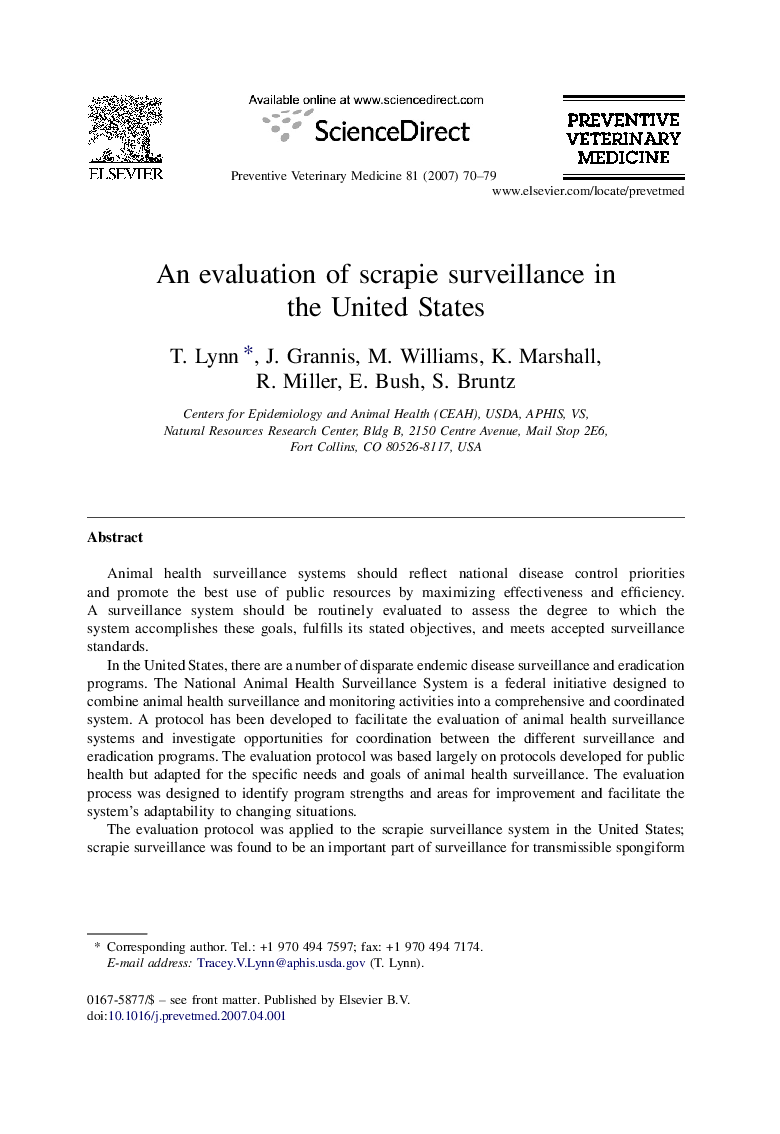| Article ID | Journal | Published Year | Pages | File Type |
|---|---|---|---|---|
| 2453403 | Preventive Veterinary Medicine | 2007 | 10 Pages |
Animal health surveillance systems should reflect national disease control priorities and promote the best use of public resources by maximizing effectiveness and efficiency. A surveillance system should be routinely evaluated to assess the degree to which the system accomplishes these goals, fulfills its stated objectives, and meets accepted surveillance standards.In the United States, there are a number of disparate endemic disease surveillance and eradication programs. The National Animal Health Surveillance System is a federal initiative designed to combine animal health surveillance and monitoring activities into a comprehensive and coordinated system. A protocol has been developed to facilitate the evaluation of animal health surveillance systems and investigate opportunities for coordination between the different surveillance and eradication programs. The evaluation protocol was based largely on protocols developed for public health but adapted for the specific needs and goals of animal health surveillance. The evaluation process was designed to identify program strengths and areas for improvement and facilitate the system's adaptability to changing situations.The evaluation protocol was applied to the scrapie surveillance system in the United States; scrapie surveillance was found to be an important part of surveillance for transmissible spongiform encephalopathies. Results from the evaluation of sensitivity, sampling methods and representativeness are presented.
